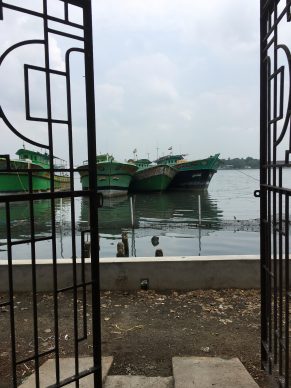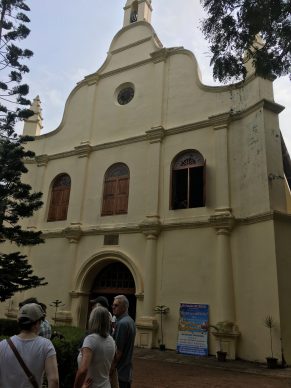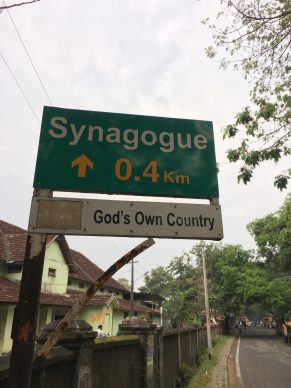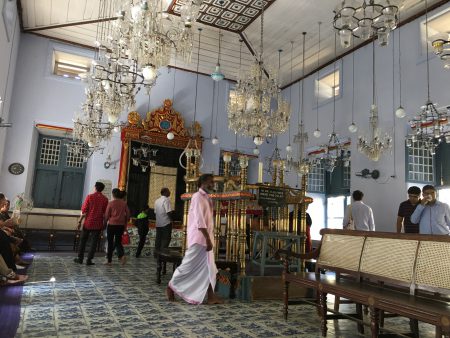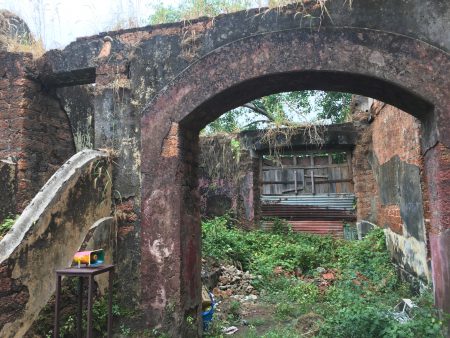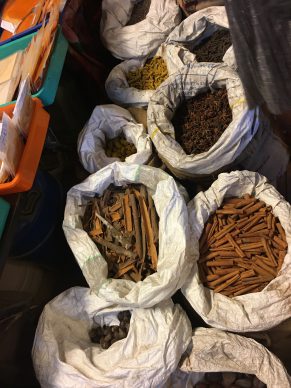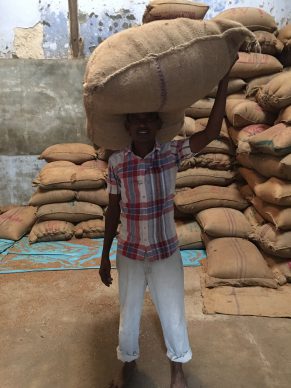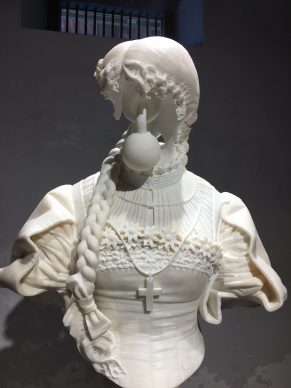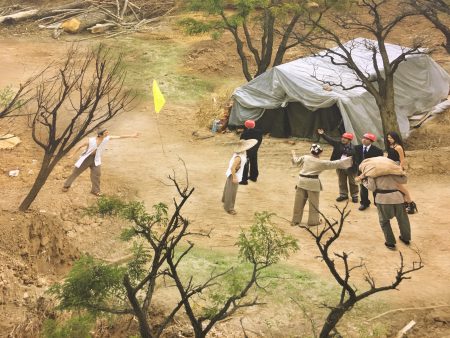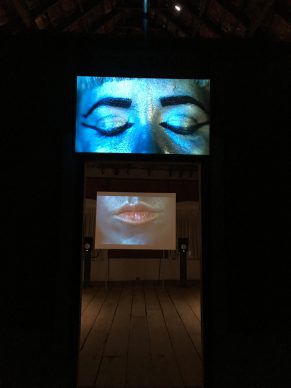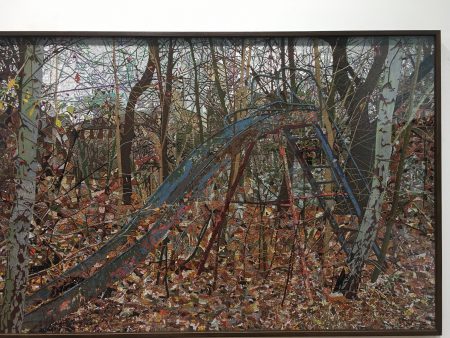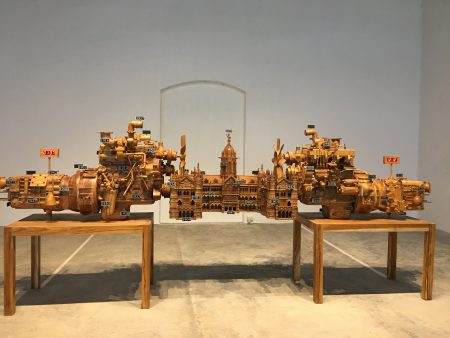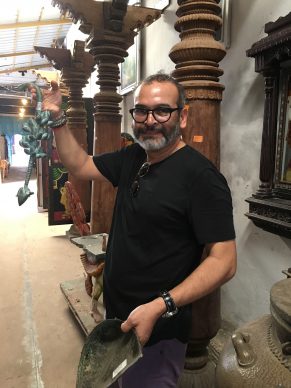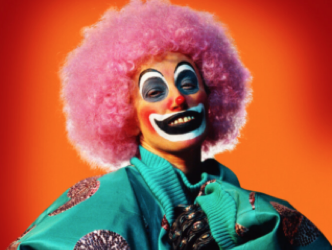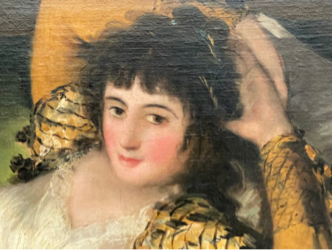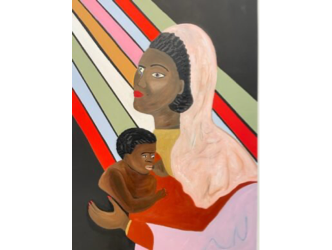To my knowledge, there are only two words of certifiably Venetian origin bequeathed to the world by La Serenissima:
one is ghetto,
and the other is biennale.
-Ghetto, which initially makes its appearance in the Middle Ages, was located in the Cannaregio district, a tightly circumscribed part of the city to which the Jews were confined in the city’s tallest buildings.
-Biennale, far less ignominious, was used to describe an expansive event held in Venice every two years, the first in 1895, which was dedicated to the artists of the day.
If the former has anything whatsoever to do with the latter, it’s in the fact that the biennale, a firmly established format these days, from the Whitney Museum’s in New York to the Sharjah in the United Arab Emirates, is a relatively ghettoised phenomenon, attracting first and foremost the world’s contemporary art aficionados.
There is, however, one striking exception to this rule, and it’s the fledgling Kochi Biennale in southern India, Kerala.
From the spice sellers to the tut tuk drivers, the word ‘biennale’, pronounced the Italian way, conjures up a major happening for the city.
Legend has it that Cochin (as it was formerly known) was home to India’s first synagogue, its first church and its first mosque. That’s why Kerala is called here, God’s own country.
And in 2012 this city that was alternately a Portuguese trading post, a Dutch trading post and a British protectorate, launched a gigantic contemporary art event for the very first time: a Biennale
The event came in the wake of the country’s economic liberalisation in the early ’90s, India’s first Venice Biennale in 2011, and also the entrance of Indian artists like the famous Subodh Gupta on the international art market.
The Kochi Biennale, in its third edition, is a vast, unique and exceptional event.
It boasts the advantage of harmonising with the local landscape.
The state of Kerala has strong communist roots and has the highest literacy rates in all of India – above 90%.
For this 2016-2017 event the state donated $900,000 to finance the event, which was supplemented by a number of private patrons like BMW.
The Kochi Biennale has brought about the restoration of a variety of buildings from its rich past, which until then had been left abandoned.
And the Keralans visit the exhibitions.
I came across a tuk tuk driver at the Biennale’s private view and the French-Moroccan artist Achraf Touloub told me that he saw street children visiting the Biennale.
The event has given a whole new energy to the city according to Shwetal Patel, a cultural expert and consultant for the Biennale who was part of the panel at the book launch for ‘India Biennale Effect: A politics of contemporary art’ which addresses this impact.
I might mention that in all of India there is not a single major museum showing contemporary art on regular basis, with the exception of private collections.
Nevertheless, now, The National Gallery of Modern Art in Delhi, once a year, manages to put together a major show around an artist. In January it will be holding a Jitish Kallat retrospective.
In fact, the Kochi Biennale is a package that combines chaotic streets, colonial buildings, roaring traffic, lush vegetation, an inquisitive local population and curation by a different artist every two years.
This year it’s the turn of Sudarshan Shetty (born 1961) to take the reins. We might add in passing that during his introductory speech, which was preceded by an exceptional concert featuring percussion and woodwind, he asked the auditorium for a minute’s silence in honour of Fidel Castro’s passing.
The Kochi Biennale has 112 projects in 12 locations featuring 97 artists from 31 countries.
The first thing to remark is that there are no, or next to no, major stars from the contemporary art world, or even from contemporary art, with the exception perhaps of the American artist Gary Hill (born 1951), a pioneer of video art, and the Russian collective AES+F, which through its ultra-slick, dialogue-free films transmits a contemporary reality that’s kitsch, fascinating and mysterious at the same time.
It would seem that the majority of foreign participation has been financed either the by embassies of the artists involved or their cultural organisations.
Sudarshan Shetty explains how he selected the participating artists:
In fact, this Biennale taking place on the other side of the world ( for most of the readers) succeeds in compiling a picture of the world that is global and highly pertinent in its diversity.
The techniques on display are wide-ranging, from embroidery to 3D pictures, as are the forms that the art takes, from theatre performances through to ancient Indian chants and figurative mural painting.
In certain locations, like the Pepper House, a former dutch pepper storage, there is a striking contrast between the space, which verges on the precarious – the floorboards are laid so slapdashly that you can see the floor below – and a suite of video screens with computer graphics by the american artist Leighton Pierce or the british artist Hanna Tuulikki.
Here we find the work of the English artist Jonathan Owen (born 1973) who reworked a delicate 19th century marble bust, transforming her head into a hook.
The central piece of the Kochi Biennale is a gigantic pyramide apparently made of (smelly) cow dung by the slovenian artist Ales Steger. One can visit it. It looks like an allegory of the world: dark and labyrinthine. It’s called “The pyramid of exiled poets”.
China has a particularly strong presence also inspired by the past.
Taking as its model the picture scrolls recounting the emperors’ exploits, Dai Xiang (born 1978) has created a 25-metre-long series of photographed scenes of contemporary urban life with its real estate developers, its wild constructions etc…
But Taiwan also responds to the call with a video by Wu Tien-Chang (born 1956), which makes his burlesque hero parade, now as a sailor, now as a pilot.
Certain exhibition locations are almost unlocatable in the city’s labyrinths, for example the installation by the indian artist TV Santhosh (b. 1968) in Cochin’s old Jewish Quarter (here it’s not called a Ghetto).
He describes the effects of progress in a 6.7-metre-long wooden sculpture.
He has modelled two locomotive turbines that morph into the fabled Bombay train station. The object is marked with dates of major world events. Santosh explains that progress is perhaps not always as positively radical machine as one might believe.
During the opening days when a significant number of pieces were still unfinished, the Austrian collector Francesca Von Habsburg organised a series of discussions and performances in Kochi.
She invited some 30 people who were involved in connection with projects connected to her TBA21 foundation to discuss and perform.
‘We have to get out of our comfort zones, our galleries, our white cubes,’ she explained after a captivating performance by the American storyteller Christopher Myers.
A short distance away, ladies crouched on the floor were separating ginger in a huge warehouse.
A short distance away, men were transporting great bundles of spices on their heads.
In Kochi, one discovers contemporary art events while surrounded by the fragrance of sublime spice.
This too is the Kochi Biennale.
Until 29 march.
www.kochimuzirisbiennale.org
Support independent news on art.
Your contribution : Make a monthly commitment to support JB Reports or a one off contribution as and when you feel like it. Choose the option that suits you best.
Need to cancel a recurring donation? Please go here.
The donation is considered to be a subscription for a fee set by the donor and for a duration also set by the donor.

